Find more information in the General Comments section of the assessment
Find more information in the Rating Validity tab of the assessment
- See More
- See More
- See More
- See More
- Good
- Adequate
- Marginal
- Weak
- Poor
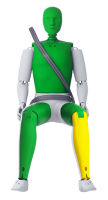 Passenger
Passenger
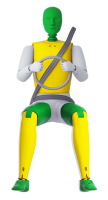 Driver
Driver
 Rear Seat
Rear Seat
 Front Seat
Front Seat
 Car
Car
 Pole
Pole
- Good
- Adequate
- Marginal
- Weak
- Poor
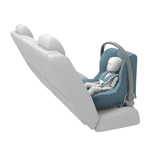
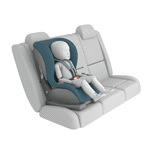
Passenger
outboard
center
Fitted to the vehicle as standard
Not fitted to the test vehicle but available as option
Not Available
-
Infants up to 13 kg
-
Infants and toddlers up to 18 kg
-
Toddlers from 9 to 18 kg
-
Toddlers over 18 kg
Easy
Difficult
Safety critical
Not allowed
| Seat Position | ||||
|---|---|---|---|---|
| Front | 2nd row | |||
| Passenger | Left | center | Right | |
| Maxi Cosi Cabriofix (Belt) | ||||
| Britax Römer King Plus (Belt) | ||||
| Britax Römer Duo Plus (ISOFIX) | ||||
| Britax Römer KidFix (Belt) | ||||
| Maxi Cosi Cabriofix & EasyFix (Belt) | ||||
| Maxi Cosi Cabriofix & EasyFix (ISOFIX) | ||||
| BeSafe iZi Kid X3 ISOfix (ISOFIX) | ||||
| Maxi Cosi Pearl & Familyfix (ISOFIX) | ||||
| Britax Römer KidFix (ISOFIX) | ||||
Easy
Difficult
Safety critical
Not allowed
The Outback scored maximum points for its protection of the 1½ year dummy in the dynamic crash tests. Forward movement of the head of the 3 year dummy, sat in a forward-facing restraint, was not excessive although forces in the chest and neck were marginally high. In the side impact, both dummies were properly contained within the protective shells of their restraints, minimising the risk of dangerous head contact with the vehicle interior. The front passenger airbag of the Outback is by default off, allowing a rearward facing child restraint to be safely used in that seating position. The airbag is turned on only when an occupant of a suitable size is detected in the seat. The system met Euro NCAP's requirements and was rewarded. All of the restraint types for which the car is designed could be properly installed and accommodated in the car.
- Good
- Adequate
- Marginal
- Weak
- Poor

Head Impact 18.9 Pts
Pelvis Impact 0.4 Pts
Leg Impact 6.0 Pts
The bumper provided good protection to pedestrians' legs in all areas tested. However, the front edge of the bonnet showed poor results in almost all areas tested. The protection provided by the bonnet surface to a pedestrian's head was good or adequate in most areas tested with poor results recorded only on the stiff windscreen pillars.
- Good
- Adequate
- Marginal
- Weak
- Poor
| System Name | VDC | |
| Performance | ||
| Applies To | All seats | ||
| Warning | Driver Seat | Front Passenger(s) | Rear Passenger(s) |
| Visual | |||
| Audible | |||
|
|||
| Type | Lane Departure Warning |
| Performance | |
|
LDW Confirmation Test
|
Pass |
| System Name | EyeSight | |||
| Type | Forward Collision Warning with Auto-Brake | |||
| Operational From | 1 km/h | |||
| Additional Information | Default On | |||
| Performance | | ||||
| Autobrake Function Only | Driver reacts to warning | |||
| Operational Speed | 1-200 km/h | 1-250 km/h | ||
| Approaching a stationary car | See AEB City | Crash avoided up to 75km/h.Crash speed reduced up to 80km/h. | ||
| Approaching a slower moving car | Crash avoided up to 70km/h.Crash speed reduced up to 0km/h. | Crash avoided up to 80km/h.Crash speed reduced up to 0km/h. | ||
| Following a car at short distance | ||||
| Car in front brakes gently | Avoidance | Avoidance | ||
| Car in front brakes harshly | Mitigation | Mitigation | ||
| Following a car at long distance | ||||
| Car in front brakes gently | Avoidance | Avoidance | ||
| Car in front brakes harshly | Avoidance | Avoidance | ||
The Outback as electronic stability control as standard equipment, together with a seatbelt reminder for the front and rear seats. While a speed assistance system is not available, a lane support system is an option. As it is expected to be fitted to most cars sold, it was included in the assessment and met Euro NCAP's requirements. As the 'EyeSight' system is an option which is expected to be fitted to most cars sold, its functionality at higher speeds, typical of open-road driving, was assessed and its performance was rated as good.
- Specifications
- Safety Equipment
- Videos
- Rating Validity
Specifications
Tested Model Subaru Outback 2.0 diesel 'EyeSight', LHD
Body Type - 5 door wagon
Year Of Publication 2014
Kerb Weight 1682kg
VIN From Which Rating Applies - applies to all Outbacks of the specification tested
Class Large Family Car
Safety Equipment
Note: Other equipment may be available on the vehicle but was not considered in the test year.
Fitted to the vehicle as standard
Fitted to the vehicle as option
Not fitted to the test vehicle but available as option
Not Available
Not Applicable
Videos
Rating Validity







Find more information in the General Comments section of the assessment
 Share
Share
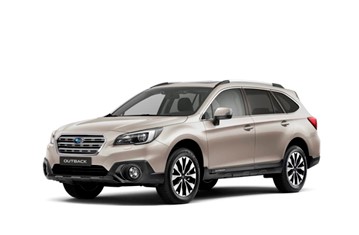









The passenger compartment remained stable in the frontal impact. Dummy readings indicated good protection of the knees and femurs of the driver and the passenger. Subaru showed that the same level of protection would be provided to occupants of different statures and to those sat in different positions, whose knees may contact the dashboard in a different place. The Outback scored maximum points in the side impact barrier test, with good protection of all critical body areas. In the more severe side pole impact, protection of the chest and abdomen was adequate, while that of the head and pelvis was good. Tests on the front seats and head restraints, and a geometric assessment of the rear restraints, indicated good protection against whiplash injuries in the event of a rear-end collision. Subaru's 'EyeSight' autonomous braking system operates from low, city-type speeds to higher speeds typical of inter-urban driving. As the system is not standard, its functionality at low speeds did not qualify for assessement.